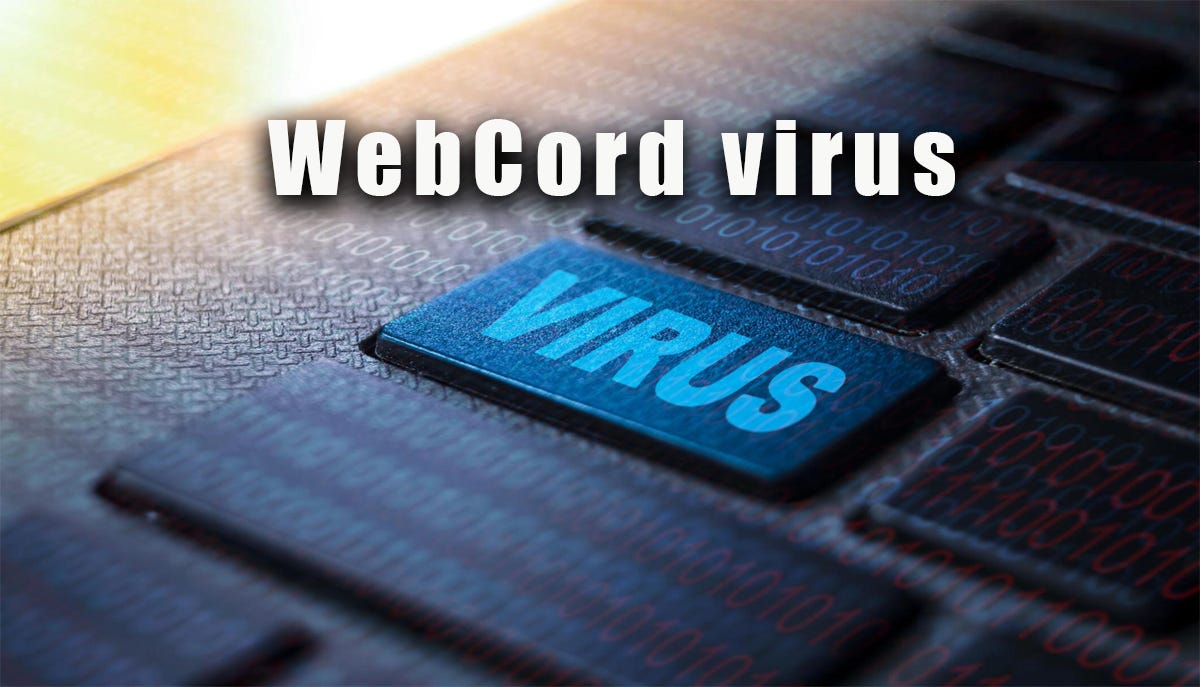In today’s digital age, safeguarding our devices from malicious software is more crucial than ever. One such threat that has been making waves is the WebCord virus. Whether you’re a seasoned tech enthusiast or simply a concerned user looking to secure your digital life, understanding, protecting, and removing this virus is essential.
This comprehensive guide will walk you through everything you need to know about the WebCord virus, including how it operates, steps to protect yourself, and effective methods for removal. Let’s ensure your digital world remains safe and secure.
What Is the WebCord Virus?
The WebCord virus is a type of malware designed to infiltrate your computer and compromise your personal information. Unlike traditional viruses, WebCord operates silently in the background, making it challenging to detect. This malware often disguises itself as legitimate software, tricking users into downloading and installing it. Once installed, it can steal sensitive data, track browsing habits, and even provide remote access to cybercriminals.
Understanding the true nature of WebCord is the first step in protecting yourself from its harmful effects. Recognizing its deceptive tactics can help you avoid falling victim to this malicious software.
How Does WebCord Infect Devices?
The WebCord virus employs various methods to infiltrate devices. One common technique is through email attachments. Cybercriminals send emails that appear to be from trusted sources, urging recipients to download an attachment. Once the attachment is opened, the virus installs itself on the device.
Another method involves malicious websites. These sites prompt users to download software updates or plugins, which are actually infected with the WebCord virus. Additionally, downloading pirated software or media can also expose your device to this malware.
Awareness of these infection methods can significantly reduce the risk of inadvertently downloading the WebCord virus. Always exercise caution when downloading files or clicking on links from unfamiliar sources.
Signs Your Device Is Infected
Detecting the presence of the WebCord virus can be challenging due to its stealthy nature. However, there are several signs that may indicate an infection. One common symptom is a noticeable slowdown in device performance. If your computer or smartphone suddenly becomes sluggish, it could be a sign of malicious activity.
Another indicator is the appearance of unfamiliar programs or files. The WebCord virus often downloads and installs additional malware, leading to unexpected changes on your device. Additionally, frequent pop-up ads and browser redirects are red flags that should not be ignored.
If you notice any of these signs, it’s crucial to act quickly to mitigate the damage. Prompt detection and removal can prevent further harm to your device and personal information.
Steps to Protect Your Device
Protecting your device from the WebCord virus requires a combination of proactive measures and vigilant behavior. Start by installing a reputable antivirus program. Regularly update the software to ensure it can detect and remove the latest threats. Antivirus programs can scan your device for malware and provide real-time protection against new infections.
Keeping your operating system and software up to date is another essential step. Software updates often include security patches that address vulnerabilities exploited by malware like the WebCord virus. Enable automatic updates to stay protected without having to remember to check for updates manually.
Additionally, exercise caution when downloading files or clicking on links. Avoid opening email attachments from unknown senders and be wary of websites that prompt you to download software. Using a secure web browser with built-in security features can also provide an extra layer of protection.
Best Practices for Safe Browsing
Safe browsing habits are crucial in preventing malware infections. Always verify the authenticity of websites before entering personal information or downloading files. Look for HTTPS in the URL, indicating a secure connection. Avoid clicking on pop-up ads, as they often lead to malicious websites.
Consider using a browser extension that blocks malicious sites and ads. These extensions can prevent accidental visits to infected websites and reduce the risk of downloading malware. Additionally, clearing your browser cache and cookies regularly can help maintain your online privacy.
Practicing safe browsing habits not only protects you from the WebCord virus but also shields you from other online threats. Staying informed and cautious is the key to a secure online experience.
How to Remove WebCord Virus
If you suspect your device is infected with the WebCord virus, immediate action is necessary to remove it. Start by disconnecting from the internet to prevent further data transmission. Then, run a full system scan using your antivirus software. Follow the prompts to quarantine or delete any detected threats.
In some cases, the virus may prevent your antivirus program from running. If this happens, boot your device into Safe Mode with Networking and try running the scan again. Safe Mode disables non-essential programs, making it easier to remove the virus.
If the above steps fail, consider using a specialized malware removal tool. These tools are designed to target and eliminate specific types of malware, including the WebCord virus. Follow the instructions provided by the tool to ensure complete removal.
Preventative Measures for Future Protection
Once you’ve removed the WebCord virus, take steps to prevent future infections. Regularly back up your important data to an external drive or cloud storage. This ensures you can recover your files if your device is compromised again.
Enable firewall protection to block unauthorized access to your device. Most operating systems come with built-in firewall settings—make sure they are activated and configured correctly. Additionally, consider using a virtual private network (VPN) when browsing the internet. A VPN encrypts your data, making it difficult for cybercriminals to intercept.
By implementing these preventative measures, you can significantly reduce the risk of future malware infections. Staying proactive is the key to long-term digital security.
Understanding the Impact of WebCord
The WebCord virus can have far-reaching consequences, both for individuals and organizations. For individuals, the theft of personal information can lead to identity theft and financial loss. Cybercriminals can use stolen data to make unauthorized purchases or access sensitive accounts.
Organizations face even greater risks. A WebCord infection can compromise customer data, leading to legal repercussions and damage to the company’s reputation. Additionally, the cost of removing the virus and recovering lost data can be substantial.
Understanding the impact of WebCord underscores the importance of robust cybersecurity measures. Investing in comprehensive protection is essential for safeguarding both personal and business data.
The Role of Education in Cybersecurity
Education plays a crucial role in preventing malware infections. Ensuring that all users, whether at home or in the workplace, understand the risks associated with malware is essential. Regular training sessions on safe browsing habits and phishing awareness can significantly reduce the risk of infection.
Organizations should implement cybersecurity education programs for their employees. These programs can cover topics such as recognizing phishing emails, the importance of software updates, and how to use antivirus software effectively.
By prioritizing education, we can create a more informed and resilient digital community. Knowledge is a powerful tool in the fight against cyber threats.
Cybersecurity Resources and Tools
Leveraging cybersecurity resources and tools can enhance your protection against the WebCord virus. Websites like the Cybersecurity & Infrastructure Security Agency (CISA) offer valuable information on the latest threats and best practices for staying safe online.
Consider subscribing to cybersecurity newsletters or joining online forums dedicated to digital security. These resources can keep you updated on emerging threats and provide tips for protecting your devices.
Additionally, explore the various cybersecurity tools available. From antivirus programs to VPNs, these tools offer comprehensive protection against a wide range of threats. Investing in the right tools is a critical step in safeguarding your digital life.
Staying Informed About Emerging Threats
The digital landscape is constantly evolving, with new threats emerging regularly. Staying informed about these threats is essential for maintaining robust cybersecurity. Follow reputable cybersecurity blogs and news sites to stay updated on the latest developments.
Consider setting up Google Alerts for keywords related to cybersecurity. This can help you stay informed about new threats and best practices for protection. Additionally, participating in cybersecurity webinars and conferences can provide valuable insights and networking opportunities.
Staying informed is a continuous process. By dedicating time to learning about emerging threats, you can stay one step ahead of cybercriminals.
Conclusion
The WebCord virus poses a significant threat to both individuals and organizations. Understanding how it operates, recognizing the signs of infection, and taking proactive measures are crucial steps in protecting your digital life. By implementing the strategies outlined in this guide, you can safeguard your devices and personal information from malicious software.
Remember, cybersecurity is an ongoing process. Stay informed, practice safe browsing habits, and invest in the right tools to maintain a secure digital environment. If you need further assistance, consider reaching out to cybersecurity professionals or using specialized resources to enhance your protection.
FAQs
How can I completely remove the WebCord virus from my device?
To remove the WebCord virus, follow these steps:
- Run a Full System Scan: Use a reputable antivirus program to scan your entire system. Make sure your antivirus definitions are up-to-date.
- Enter Safe Mode: If the virus persists, boot your device into Safe Mode with Networking. This disables non-essential programs, making it easier to remove the virus.
- Use a Specialized Removal Tool: If standard antivirus software fails, consider using a specialized malware removal tool designed to target and eliminate the WebCord virus.
- Restore from Backup: If the virus has caused significant damage, restoring your system from a recent backup can be an effective way to regain a clean slate.
- Seek Professional Help: If you’re unable to remove the virus on your own, consider consulting with a cybersecurity professional for detailed assistance.
What are the symptoms of a WebCord virus infection?
Symptoms of a WebCord virus infection can include unusual system behavior such as slower performance, unexpected pop-up ads, unauthorized access to certain files, new programs that you didn’t install, increased network activity, and unusual hard drive activity. Regularly monitoring your device for these signs can help you identify and address infections early.
Can the WebCord virus steal my personal information?
Yes, the WebCord virus is designed to harvest personal information. It can track your keystrokes, capture data from browsers, and potentially access stored passwords and financial information. Immediate removal of the virus is critical to prevent data theft.
How can I prevent future WebCord infections?
To prevent future infections, employ the following measures:
- Regular Backups: Ensure you have up-to-date backups of important files.
- Firewall Protection: Verify that your firewall is enabled and properly configured.
- Use a VPN: Encrypt your internet connection with a Virtual Private Network.
- Update Software: Keep your operating system and software up-to-date to patch vulnerabilities.
- Educate Yourself: Stay informed about the latest threats and safe browsing practices.
What are some general tips for improving cybersecurity?
- Strong Passwords: Use complex passwords and change them regularly.
- Two-Factor Authentication: Enable two-factor authentication on all accounts that offer it.
- Regular Scans: Run regular antivirus and anti-malware scans.
- Be Cautious: Avoid clicking on suspicious links or downloading attachments from unknown sources.
Where can I find reliable cybersecurity resources?
Trusted organizations like the Cybersecurity & Infrastructure Security Agency (CISA) and reputable cybersecurity blogs and news sites are excellent sources of information. Subscribing to newsletters and participating in online forums can also keep you informed about the latest threats and protective measures.
By following these preventive measures and staying informed, you can significantly reduce the risk of a WebCord infection and protect your digital life from various cybersecurity threats.




